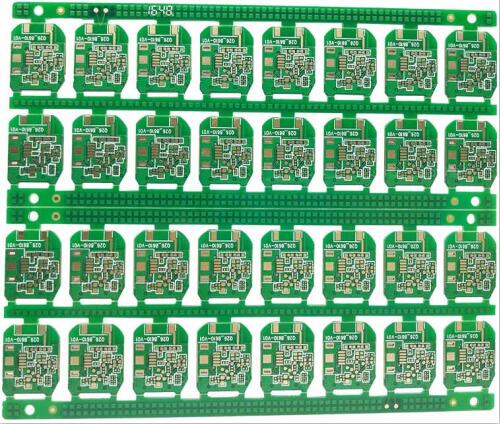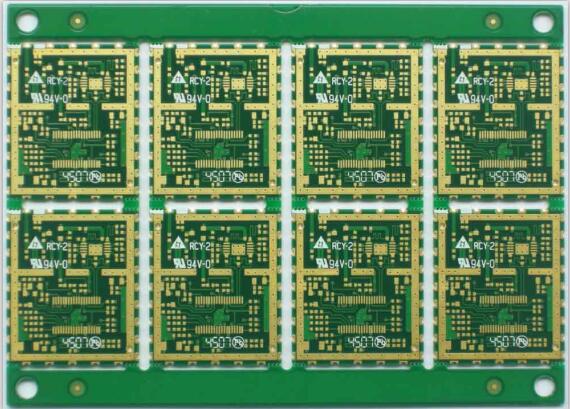In the circuit board industry, I often hear the words V-Cut, v-cut, or v-cut. Many people don’t understand what it means. Let’s talk about what a circuit board V-Cut is and its residual thickness and angle in detail. Require.
What is the circuit board V-Cut
The so-called "V-cut" is a printed circuit board(PCB) manufacturer according to the customer's drawing requirements, in advance to cut a segmentation line at a specific position of the PCB with a rotary cutter, and the purpose is to facilitate subsequent SMT circuit board assembly. "De-panel" is used, because the cut shape looks like an English [V] shape, hence the name. Some people call it micro cut, and some people call v cut or v cut.

V-Cut residual thickness requirements
Generally speaking, when we define the size of the V-Cut groove, we will only define the remaining thickness (Remained thickness), that is, the thickness of the remaining plate between the two inverted V ports of the V-Cut groove, because of this thickness Determines the severity of whether the board is easily broken and deformed.
The most common residual thickness of V-Cut is recommended to be 1/3 of the board thickness, but the minimum is not recommended to be less than 0.35mm. If it is thinner, the board may break prematurely during the manufacturing process. The maximum thickness of V-Cut is not recommended to be greater than 0.8mm. If it is thicker, the V-Cut cutting machine (Scoring) may not be able to completely cut it at one time, and it will increase the damage of the V-Cut cutting machine blade and reduce its service life.
V-Cut angle requirements
Finally, the V-shaped included angle of V-Cut is defined. Generally speaking, V-Cut has three angles of 30°, 45°, and 60°, and the most commonly used is 45°.
The greater the angle of the V-Cut, the more plates the edge of the board is eaten by the V-Cut, and the circuit on the opposite PCB must be more retracted to avoid being cut by the V-Cut or cutting the V -Damage when Cut.
The smaller the angle of the V-Cut, the better the PCB space design theoretically, but it is not good for the life of the V-Cut saw blades of the PCB manufacturer, because the smaller the V-Cut angle, the more the blade of the electric saw. The thinner it is, the easier it is to wear and break its blade. In addition, when the thickness of the board is thicker, the cutting must be deeper, so generally the angle of the V-Cut must be larger.
Circuit board solder mask introduction
The circuit board solder mask is one of the processes in the printed circuit board, which protects the etched circuit of the circuit board, and the front process is the outer layer (layout). Chinese name: Anti-welding English name: SolderMask Other names: green paint, green oil.

The solder mask is printed on the large layout surface of the PCB. After a simple baking, press the corresponding plug-in position to expose and wash away the unnecessary parts. The printed text is convenient for plug-ins and subsequent maintenance.
PCB solder mask process
1. Pretreatment removes oxidation and oil stains to prevent pollution
2, electrostatic spraying (SprayCoating) or semi-automatic printing machine printing
3. Precure is the initial curing of the paint in the previous process
4, Exposure (Exposure) Use the photosensitive characteristics of the ink. Perform image transfer through the negative film, and irradiate the area where the ink needs to be retained with strong light, so that it can be hardened and adhered firmly to the board surface
5. Develop (Develop) Use sodium carbonate to wash off the ink that has not been hardened during exposure.
6. Post Cure needs to be further cured after the liquid ink is developed to enhance its solder resistance
7, Printing of Legend (Printing of Legend) facilitates loading and maintenance
8. UV Cure uses high temperature to dry the moisture of the text and ink to make it firmly adhere to the board surface
Anti-welding function of circuit board:
1. Prevent chemicals from harming the circuit
2, maintain good insulation on the board
3. Prevent oxidation and the harm of various electrolytes, which is conducive to post-process operations
4. The text is used to mark the position of the parts; it is convenient for customers to plug-in; it is convenient for maintenance